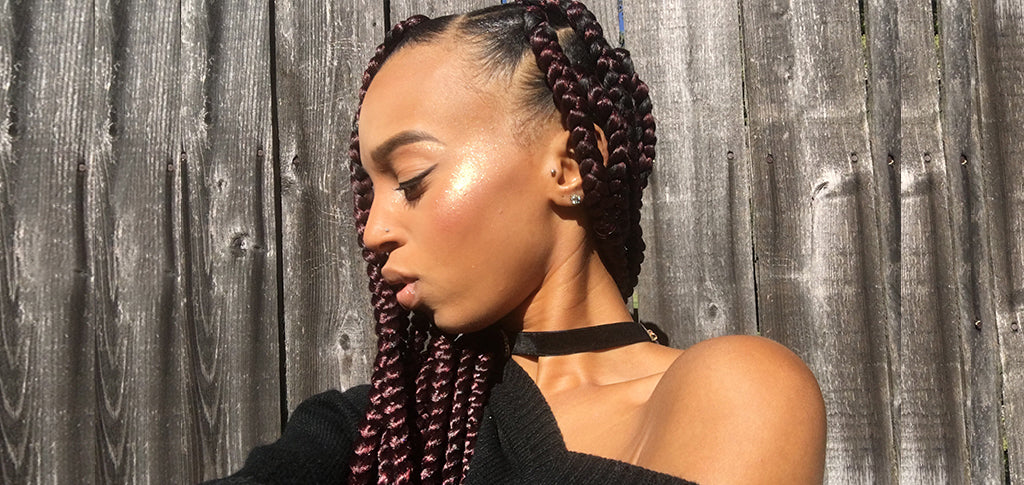Protective hairstyles are essential for maintaining the length and health of natural hair. By minimizing manipulation and protecting the ends, these styles help prevent breakage and retain moisture, promoting overall hair health.

What are Protective Hairstyles?
Protective hairstyles are styles that keep the ends of the hair tucked away and shielded from environmental damage and friction. These hairstyles can include braids, twists, buns, and updos, among others.
Benefits of Protective Hairstyles
Reduced Breakage
Protective hairstyles serve as a barrier between the delicate ends of your hair and external factors such as clothing and surfaces. By keeping the ends tucked away and shielded, these styles minimize the friction that occurs during daily activities. Friction is a common cause of hair breakage, as the constant rubbing against rough surfaces or materials can weaken the hair shaft over time. Therefore, protective styles help to safeguard your hair from this friction-induced damage, promoting healthier and stronger strands in the long run.
Retained Moisture
Protective hairstyles play a crucial role in maintaining the moisture balance of natural hair by effectively sealing in moisture and preventing excessive loss. Natural hair tends to be more prone to dryness due to its curly or oily texture, which makes it challenging for natural oils produced by the scalp to travel along the hair shaft. Protective styles help to combat this by creating a barrier that locks moisture into the hair strands. This sealing effect prevents the moisture from evaporating into the surrounding environment, keeping the hair adequately hydrated and reducing the risk of dryness and brittleness. As a result, natural hair retains its elasticity, strength, and overall health, promoting optimal growth and minimizing breakage.
Length Retention
Protective hairstyles are instrumental in promoting length retention and facilitating the growth of natural hair by minimizing breakage and damage. When hair is constantly subjected to manipulation, friction, and environmental stressors, it becomes more prone to breakage, resulting in stunted growth and difficulty retaining length. Protective styles offer a solution by providing a means to safeguard the ends of the hair, which are particularly vulnerable to damage. By reducing friction and minimizing the exposure of hair strands to external factors, protective hairstyles help maintain the integrity of the hair shaft, preventing split ends and breakage. Consequently, natural hair can grow longer and retain its length more effectively over time, allowing individuals to achieve their desired hair goals with patience and consistency.
Popular Protective Hairstyles
Box Braids
Long-lasting braids are achieved by meticulously sectioning the hair into small parts and then braiding extensions into each section. This process involves dividing the hair into neat and uniform sections to ensure that the braids are consistent in size and appearance. Once the hair is sectioned, synthetic or natural hair extensions are added to each section before braiding begins. The extensions are seamlessly integrated with the natural hair, providing both length and volume to the braids.
The braiding technique used can vary depending on personal preference and desired style. With options such as box braids, Senegalese twists, or Ghana braids. Overall, the meticulous process of sectioning and braiding ensures that the hairstyle is not only aesthetically pleasing but also durable, allowing individuals to enjoy their protective style for an extended period without frequent maintenance.
Twists
Two strands of hair are twisted around each other to create a rope-like appearance. Twists can be worn loose or styled into updos.
Bantu Knots
Hair is twisted and wrapped around itself to form small, coiled knots. Bantu knots can be worn as a protective style or unravelled for a curly hairstyle.
Cornrows
Braids that are closely woven to the scalp in intricate patterns. Cornrows can be styled in various designs and lengths.
Protective Updos
Bun hairstyles that gather the hair into a knot or bun, protecting the ends while keeping the hair off the shoulders.
Tips for Maintaining Protective Hairstyles
Moisturize Regularly
Use a lightweight moisturizer or hair oil to keep the hair hydrated while in protective styles.
Protect Your Edges
Avoid tight hairstyles that can cause tension and damage to the delicate hairline.
Sleep on a Silk or Satin Pillowcase
Silk or satin pillowcases reduce friction and help maintain moisture in the hair while sleeping.
Limit Style Duration
Avoid leaving protective styles in for too long to prevent matting, tangling, and potential damage to the hair.
Maintain Scalp Health:
Keep the scalp clean and moisturized to prevent buildup and maintain a healthy environment for hair growth.
Conclusion
Protective hairstyles are a versatile and effective way to maintain the length and health of natural hair. By incorporating these styles into your routine and following proper maintenance techniques, you can enjoy healthy, thriving hair for years to come.
